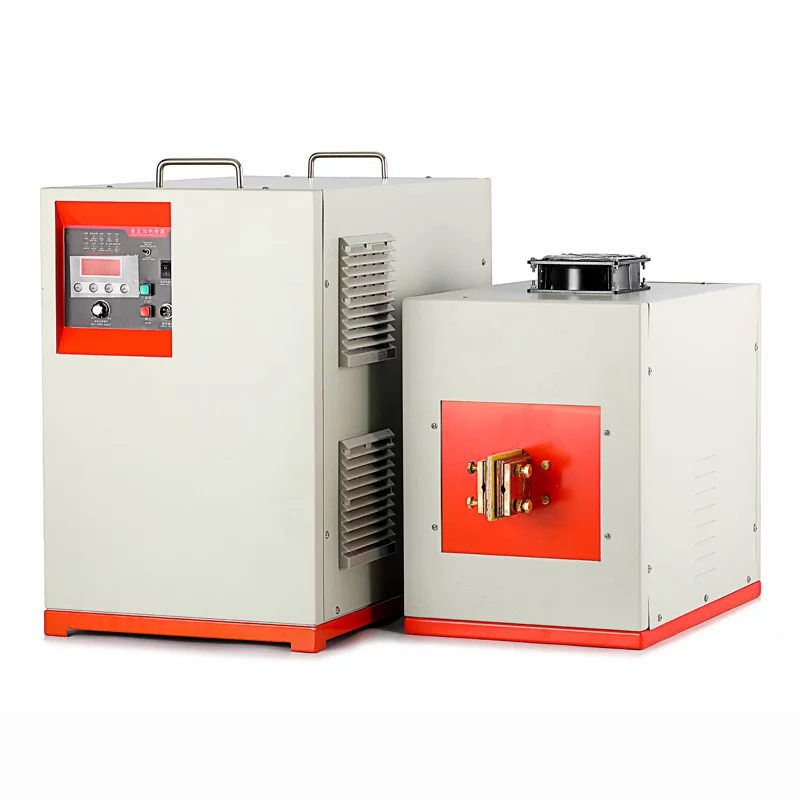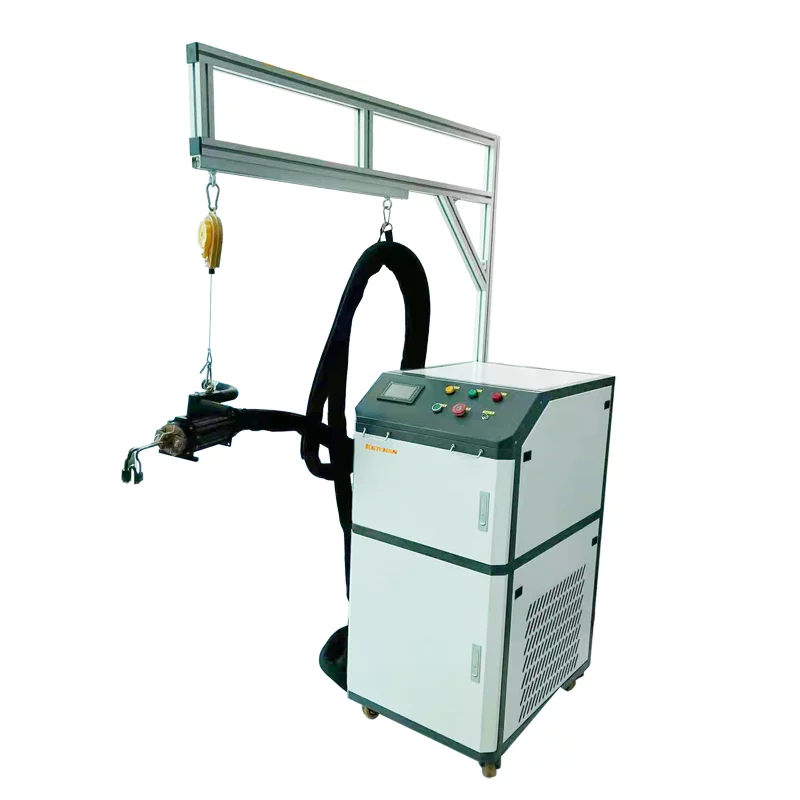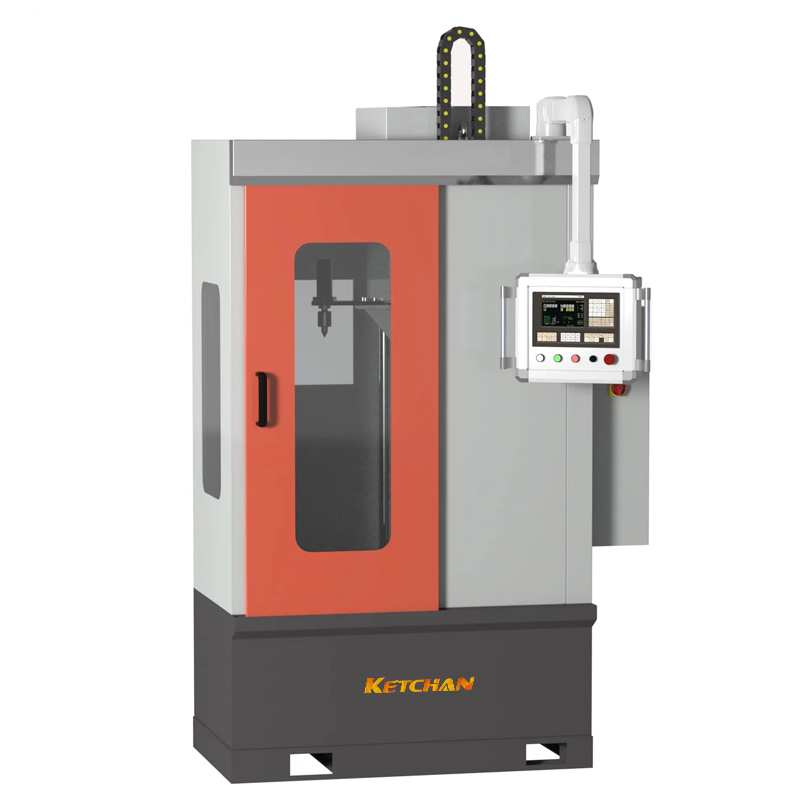1. One step heating
Primary or simultaneous heating is the most common method of induction quenching. When this method USES two rectangular tubes to surround the workpiece surface for rotating heating, it is conventionally known as Single Shot.
The advantage of the primary heating method is to complete all the surface area of the workpiece to be heated at one time. Therefore, its operation is simple and productivity is high. It is suitable for the workpiece with the not too large heating area, and for the workpiece with an especially large heating area, the primary heating method requires a considerable power supply and high investment cost.
The most common examples of primary heating are small and medium modulus gears, CVJ bell shell rods, internal raceways, belt rollers, support wheels, leaf spring pins, dials, valve ends, valve rocker arms, and so on.
(1) Semi-axle one-time quenching Some data have compared the equipment floor area with the same output of semi-axle induction quenching. The equipment floor area is 40m2 with the primary heating method, while 115m2 with the scanning quenching method
A) Scan quench B) half shaft quench once
A domestic automobile production company has changed its semi-axle quenching process from scanning quenching to transverse magnetic field one-time quenching, and the production beat has been reduced from a few minutes to 40s. While the production efficiency has been greatly improved, the fatigue strength of semi-axle bending and torsion has also been increased by more than 10 times.
(2) Another improvement in the gear heating process application by one-time quenching and one-time heating method is the adoption of an inclined enveloping induction coil instead of the whole enveloping induction coil, as shown in Figure 2.As we all know, the module of gear should choose different current frequency to heat, if the current frequency is too high or too low, surrounded with the whole circle of gear circle of induction heating, there will be a tip temperature above or below the alveolar phenomenon, when using inclined bag type sensors rotate heating, because each particle on the surface of the tooth, heating in the induction coil, to cover an area only, therefore, it’s actual heating for heating, stop, heating, stop…Each particle is heated only once at each turn to the effective circle covering the area, and the rest time is the uniform temperature time. Therefore, it is helpful to prevent the tooth tip temperature from being too high or too low. This kind of inclined envelopment sensor has been paid attention to and applied in a domestic machine tool factory.
A) Bevel enveloped inductor b) bevel enveloped gear heating
2. Scanning quenching method
Heating area is larger, the power supply power when the workpiece is small, often using this method, at this point, the calculation of heating area S refers to the area, the tolerance induction coil, therefore, the same power density, the required power is small, low equipment investment cost, applicable to small batch production, a typical example for the big diameter of the piston rod, corrugated roll, roll, oil pipe, sucker rod, steel, machine tools guide rail and so on. Shown in figure 3 is a kind of large-diameter shaft scanning quenching workpiece Ф 750 mm diameter, L = 10 m, f = 60 Hz power supply, power 1500 kW, hardening layer depth of 75 mm, the quenching tank is similar to the swimming pool.
Ф 750 mm, L = 10 m scanning hardening machine (Ajax Tocco company)
(1) The shaft scanning quenching belt with steps was once stipulated by the old process that the hardening layer near the steps could be interrupted, and some examples were even given in some mechanical design manuals.
The difficulty of this process is solved by the transverse magnetic field heating method of rectangular tube, which makes the longitudinal current flow through the step. Similarly, by using the scanning method, when it adopts oblique shape sensor (look for the oval roof as around, the arrow direction), due to the eddy current on the workpiece induction is inclined bag shape, both through the steps of the small diameter, through the steps of large diameter at the same time, therefore, the steps of the hardening layer, when the steps were similar, can be connected, related sensors have to see chapter 7.
(2) scanning combined with a two heating process of the camshaft quenching method, when the width of the CAM and shaft neck width is very large, generally adopts double location, heat sensors in both of CAM and the journal, but there is also a kind of method, namely USES the width CAM with appropriate sensors, except a heating method CAM and scanning method for shaft quenching are available, and the sensor has two quenching liquid inlet pipe head.
3. One-step quenching
A typical example is multiple camshaft cams, which are heated one or more cams at a time, and then another part of the CAM is heated after quenching. A gear quenching by teeth at a time can also be included in this category.
The.
4. Stage scanning quenching
A typical example is the valve rocker shaft or variable speed sense shaft, a shaft on the multiple parts of the quenching, quenching width may be different, tooth by tooth scanning quenching can also be included in this category.
5. Heat and quench in liquid
Quenching in liquid, the sensor with the heating surface of the workpiece is immersed in the quenching liquid, heated, due to the heating surface is greater than the power density around the quenching liquid cooling speed, therefore, the surface heats up quickly, after the power sensors, due to the center of workpiece heat and quenching liquid cooling, surface quenching.
This method is generally suitable for a steel workpiece with a low critical cooling rate. Self-cooling and quenching of the workpiece mean that the workpiece is placed in the air. After the sensor power is cut off, the workpiece core absorbs heat from the surface. When the cooling rate of the heated surface is greater than the critical cooling rate, the workpiece is hardened, similar to the quenching situation in liquid.





